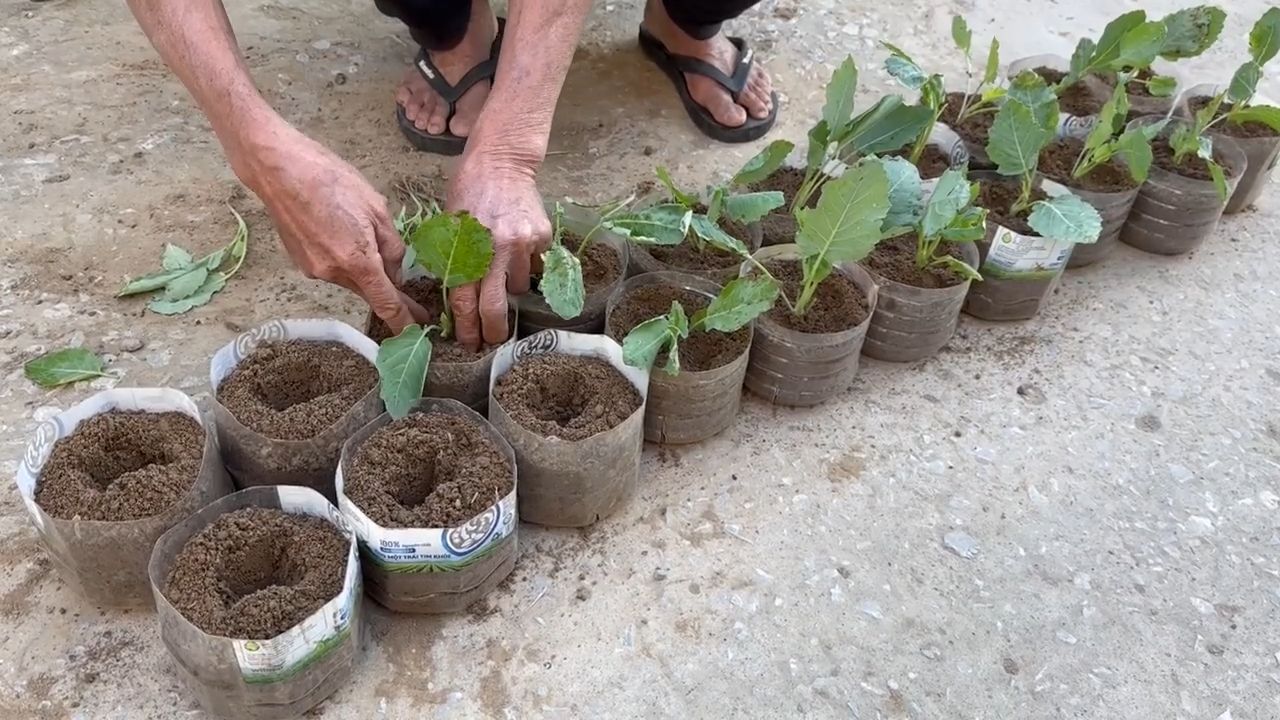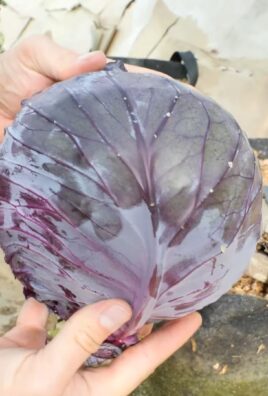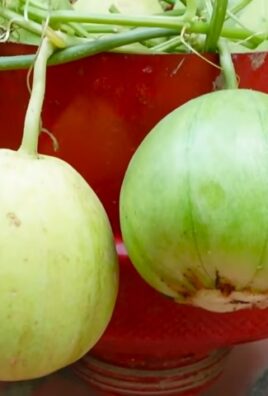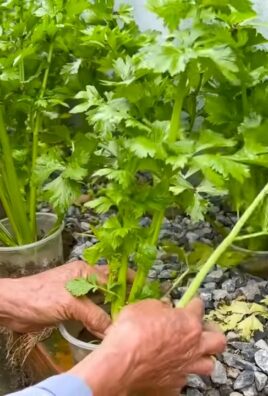Small space hanging garden dreams can absolutely become a reality, even if you only have a tiny balcony or a sunny window! Are you tired of feeling like you can’t indulge your green thumb because of limited square footage? I totally get it! I used to think a lush garden was only for those with sprawling yards, but then I discovered the magic of vertical gardening, and specifically, the charm and practicality of hanging gardens.
Hanging gardens aren’t just a modern trend; their roots go way back! Think of the legendary Hanging Gardens of Babylon, one of the Seven Wonders of the Ancient World. While we might not be building anything quite that elaborate, the principle remains the same: maximizing space and bringing beauty to unexpected places. For centuries, cultures around the world have utilized hanging planters to cultivate herbs, vegetables, and flowers, adding a touch of nature to even the most urban environments.
In today’s world, where many of us live in apartments or condos, the need for creative gardening solutions is greater than ever. A small space hanging garden allows you to grow your own fresh produce, add a splash of color to your living space, and even purify the air, all without sacrificing precious floor space. Plus, let’s be honest, there’s something incredibly satisfying about nurturing plants and watching them thrive, especially when you’ve created the perfect environment for them yourself. This DIY guide will provide you with simple, budget-friendly tricks and hacks to create your own stunning hanging garden, transforming your small space into a verdant oasis. Let’s get started!

DIY Hanging Garden for Small Spaces: Your Green Paradise
Hello everyone! Do you also have the problem of having little space but still not wanting to miss out on a bit of greenery? Then I have the perfect solution for you: a DIY hanging garden! It’s not only super space-saving but also a real eye-catcher. I’ll show you how you can conjure up your own little jungle with simple materials and a bit of creativity. Let’s get started!
What You Need: The Material List
Before we begin, here is a list of all the materials you’ll need for your hanging garden. Don’t worry, you probably already have most of it at home or can get it cheaply at a hardware store.
- Planting containers: There are no limits to your imagination here! You can use terracotta pots, old cans, buckets, or even recycled plastic bottles. Just make sure they have holes in the bottom so that water can drain out.
- Plants: Choose plants that require little light and grow well in pots. Hanging strawberries, herbs, succulents, ivy, or trailing flowers are ideal.
- Ropes or chains: To hang the pots, you will need sturdy rope, cord, wire, or chains. Make sure they can support the weight of the planted pots.
- Hooks or a rod: To hang the garden, you will need hooks, a curtain rod, a sturdy plank, or another suitable hanging fixture.
- Soil: Use high-quality potting soil that is tailored to the needs of your plants.
- Tools: A drill (if you need to drill holes in the pots), scissors, a measuring tape, a pen, and possibly pliers.
- Optional: Paint, brushes, decorative materials (e.g., stones, shells, colorful ribbons) to embellish the pots.
Step-by-Step Guide: How to Build Your Hanging Garden
Now let’s get down to business! Follow these steps to build your own hanging garden.
1. Preparation of the Planting Containers
- Cleaning: Clean the planting containers thoroughly before using them. Remove dirt and dust.
- Drainage holes: If your pots don’t have holes in the bottom, carefully drill some with a drill. This is important so that excess water can drain and the roots don’t rot.
- Optional: Painting and Decorating: If you like, you can now paint the pots or decorate them with other materials. Let your creativity run wild! Acrylic paints work well on terracotta pots. You can also work with napkin techniques or mosaics.
- Drill holes for the rope (if necessary): If you want to hang the pots directly on ropes, carefully drill holes in the upper rim of the pots. Make sure the holes are large enough to thread the rope through, but not so large that the pot becomes unstable.
2. The Suspension: Ropes and Knots
- Cut the ropes: Cut the ropes or chains to the desired length. Consider how low the pots should hang and how much space you want between each pot. It’s better to cut them a little longer; you can always shorten them later.
- Tie the knots: There are several ways to attach the pots to the ropes. Here are two common methods:
- Method 1: Knot under the pot: Thread the rope through the holes in the pot and tie it firmly underneath. Make sure the knot is stable and holds the pot securely.
- Method 2: Macrame technique: If you have a bit more time and patience, you can also attach the pots using macrame knots. There are many tutorials online that show you how to do this. It looks particularly beautiful!
- Set the spacing: Decide on the distance at which the pots should hang and fix the ropes accordingly. You can attach the ropes to a rod or to individual hooks.
3. Planting the Pots
- Drainage layer: Fill a layer of gravel or expanded clay pebbles into the bottom of the pots. This ensures good drainage and prevents waterlogging.
- Fill with soil: Fill the pots with potting soil. Leave some space at the top so the soil doesn’t spill over when watering.
- Insert the plants: Carefully place the plants in the pots. Make sure the roots have enough space.
- Watering in: Water the plants thoroughly after planting them.
4. Hanging and Decorating
- Attach the suspension: Fasten the hooks or the rod in the desired location. Make sure the suspension is stable and can support the weight of the hanging garden.
- Hang the pots: Hang the pots on the ropes or chains. Make sure the pots are evenly distributed and do not bump into each other.
- Decorate: Decorate your hanging garden as you wish. You can use stones, shells, colorful ribbons, or other decorative materials to make it even more beautiful.
Care Tips for Your Hanging Garden
To keep your hanging garden beautiful for a long time, here are a few care tips:
- Watering: Water the plants regularly, but not too much. Make sure the soil is always slightly moist. Avoid waterlogging.
- Fertilizing: Fertilize the plants regularly with a liquid fertilizer. Follow the instructions on the packaging.
- Sunlight: Place the hanging garden in a spot where the plants get enough sunlight. However, make sure they are not exposed to the harsh midday sun.
- Pruning: Regularly trim off wilted leaves and flowers. This promotes growth and keeps the plants healthy.
- Pests: Regularly check the plants for pests. If necessary, you can treat them with a suitable remedy.
Ideas for Different Hanging Gardens
Here are a few more ideas on how you can design your hanging garden:
- Herb garden: Plant various herbs like basil, parsley, chives, and mint in the pots. This way, you always have fresh herbs on hand for cooking.
- Succulent garden: Succulents are low-maintenance and look great. Plant different types of succulents in the pots and create a desert garden.
- Flower garden: Plant trailing flowers like petunias, geraniums, or fuchsias in the pots. This will give you a colorful hanging garden.
- Vegetable garden: Plant small vegetable varieties like strawberries, tomatoes, or peppers in the pots. This allows you to grow your own vegetables, even if you don’t have a garden.
- Indoor hanging garden: You can also create a hanging garden indoors. Use plants that require little light, such as ivy, ferns, or spider plants.
I hope this guide has helped you build your own hanging garden. Have fun gardening! And remember: It doesn’t have to be perfect, as long as you like it! Feel free to show me your results!

Conclusion
Transforming your cramped balcony or tiny apartment into a lush, vibrant oasis is more achievable than you might think. This DIY small space hanging garden trick isn’t just about adding greenery; it’s about maximizing your limited area, injecting personality into your home, and creating a tranquil escape from the urban hustle. We’ve shown you how to craft a stunning vertical garden that’s both functional and aesthetically pleasing, all without breaking the bank or requiring extensive gardening expertise.
Why is this a must-try? Because it’s a game-changer for small space living. It allows you to enjoy the beauty and benefits of gardening, even when square footage is at a premium. Imagine stepping onto your balcony and being greeted by a cascade of colorful flowers, fragrant herbs, or even fresh vegetables, all thriving in your own custom-designed hanging garden. It’s a mood booster, an air purifier, and a conversation starter, all rolled into one.
But the beauty of this DIY project lies in its adaptability. Feel free to experiment with different types of containers. Instead of traditional pots, consider repurposing old tin cans, mason jars, or even plastic bottles for a more eco-friendly approach. You can also play around with the arrangement of your plants. Create a symmetrical design for a classic look, or opt for a more organic, free-flowing arrangement for a touch of whimsy.
Consider incorporating trailing plants like ivy or pothos for a dramatic, cascading effect. Or, if you’re a culinary enthusiast, dedicate a section of your hanging garden to herbs like basil, mint, and rosemary, bringing fresh flavors right to your kitchen. For those with sunnier spaces, consider adding vibrant flowering plants like petunias or geraniums for a burst of color. Succulents are also a great option for low-maintenance beauty, thriving in drier conditions and adding unique textures to your vertical garden.
Don’t be afraid to get creative with the hanging mechanism as well. Instead of using standard hooks, explore options like macrame plant hangers, repurposed rope, or even decorative chains. The possibilities are endless, and the only limit is your imagination.
We wholeheartedly encourage you to give this DIY small space hanging garden trick a try. It’s a rewarding project that will transform your living space and bring a touch of nature into your everyday life. Once you’ve created your own vertical masterpiece, we’d love to see it! Share your photos and experiences with us on social media using [Your Hashtag Here]. Let’s inspire others to embrace the joy of gardening, no matter how small their space may be. We are confident that this project will not only enhance your living space but also provide a sense of accomplishment and connection with nature. So, gather your supplies, unleash your creativity, and get ready to transform your small space into a thriving green haven. Happy gardening!
FAQ
What types of plants are best for a small space hanging garden?
The best plants for a small space hanging garden are those that thrive in containers, don’t require excessive sunlight, and have a manageable growth habit. Some excellent choices include:
* **Herbs:** Basil, mint, rosemary, thyme, oregano, and parsley are all relatively easy to grow in containers and can be harvested for culinary use.
* **Lettuce and Salad Greens:** Many varieties of lettuce, spinach, and other salad greens can be grown in hanging baskets or containers.
* **Strawberries:** Hanging strawberry plants are both beautiful and productive.
* **Trailing Flowers:** Petunias, impatiens, verbena, and calibrachoa are all excellent choices for adding color and cascading beauty to your hanging garden.
* **Foliage Plants:** Pothos, ivy, spider plants, and ferns are all low-maintenance options that add lush greenery to your space.
* **Succulents:** Echeveria, sedum, and sempervivum are drought-tolerant and come in a variety of shapes and colors, making them ideal for sunny locations.
* **Dwarf Vegetables:** Consider compact varieties of tomatoes, peppers, or eggplants that are specifically bred for container gardening.
When selecting plants, consider the amount of sunlight your space receives, the available space in your containers, and your personal preferences.
How do I water a hanging garden effectively?
Watering a hanging garden requires a bit more attention than watering plants in the ground. Here are some tips for effective watering:
* **Check the soil moisture regularly:** Use your finger to check the soil moisture level before watering. If the top inch of soil feels dry, it’s time to water.
* **Water thoroughly:** Water until water drains out of the bottom of the container. This ensures that the entire root ball is adequately moistened.
* **Water slowly:** Avoid watering too quickly, as this can cause water to run off the surface of the soil without penetrating deeply.
* **Water early in the morning:** Watering in the morning allows the foliage to dry before nightfall, reducing the risk of fungal diseases.
* **Consider using a watering can with a long spout:** This will make it easier to reach plants that are hanging higher up.
* **Use self-watering containers:** These containers have a reservoir that provides a consistent supply of water to the plants, reducing the frequency of watering.
* **Be mindful of the weather:** During hot, dry weather, you may need to water your hanging garden more frequently.
What type of soil should I use for my hanging garden?
The best type of soil for a hanging garden is a lightweight, well-draining potting mix. Avoid using garden soil, as it can be too heavy and compact, which can restrict root growth and drainage. Look for a potting mix that contains ingredients like peat moss, perlite, and vermiculite, which help to improve drainage and aeration. You can also add some compost to the potting mix to provide additional nutrients to your plants.
How do I fertilize my hanging garden?
Hanging gardens require regular fertilization to provide the nutrients that plants need to thrive. Use a balanced liquid fertilizer diluted to half strength every 2-4 weeks during the growing season. You can also use a slow-release fertilizer at the time of planting, which will provide a steady supply of nutrients over several months. Be sure to follow the instructions on the fertilizer packaging carefully.
How do I protect my hanging garden from pests and diseases?
To protect your hanging garden from pests and diseases, follow these tips:
* **Inspect your plants regularly:** Check your plants for signs of pests or diseases, such as aphids, spider mites, or powdery mildew.
* **Remove any infected leaves or stems:** If you find any infected plant parts, remove them immediately to prevent the spread of the problem.
* **Use organic pest control methods:** If you have a pest infestation, try using organic pest control methods, such as insecticidal soap or neem oil.
* **Provide good air circulation:** Good air circulation helps to prevent fungal diseases.
* **Avoid overwatering:** Overwatering can create conditions that are favorable for fungal diseases.
* **Choose disease-resistant varieties:** When selecting plants, choose varieties that are known to be resistant to common diseases.
How much weight can my balcony or hanging structure support?
This is a crucial question! Before installing your hanging garden, it’s essential to determine the weight capacity of your balcony or hanging structure. Consult with a building professional or structural engineer to ensure that your structure can safely support the weight of your containers, soil, plants, and water. Overloading a balcony or hanging structure can be extremely dangerous.
Can I move my hanging garden indoors during the winter?
Yes, you can move your hanging garden indoors during the winter, especially if you live in a climate with cold winters. However, you’ll need to provide your plants with adequate light and humidity. Place your hanging garden near a sunny window or use grow lights to supplement natural light. You may also need to increase the humidity around your plants by using a humidifier or misting them regularly. Be sure to monitor your plants for pests and diseases, as they may be more susceptible to problems indoors.




Leave a Comment